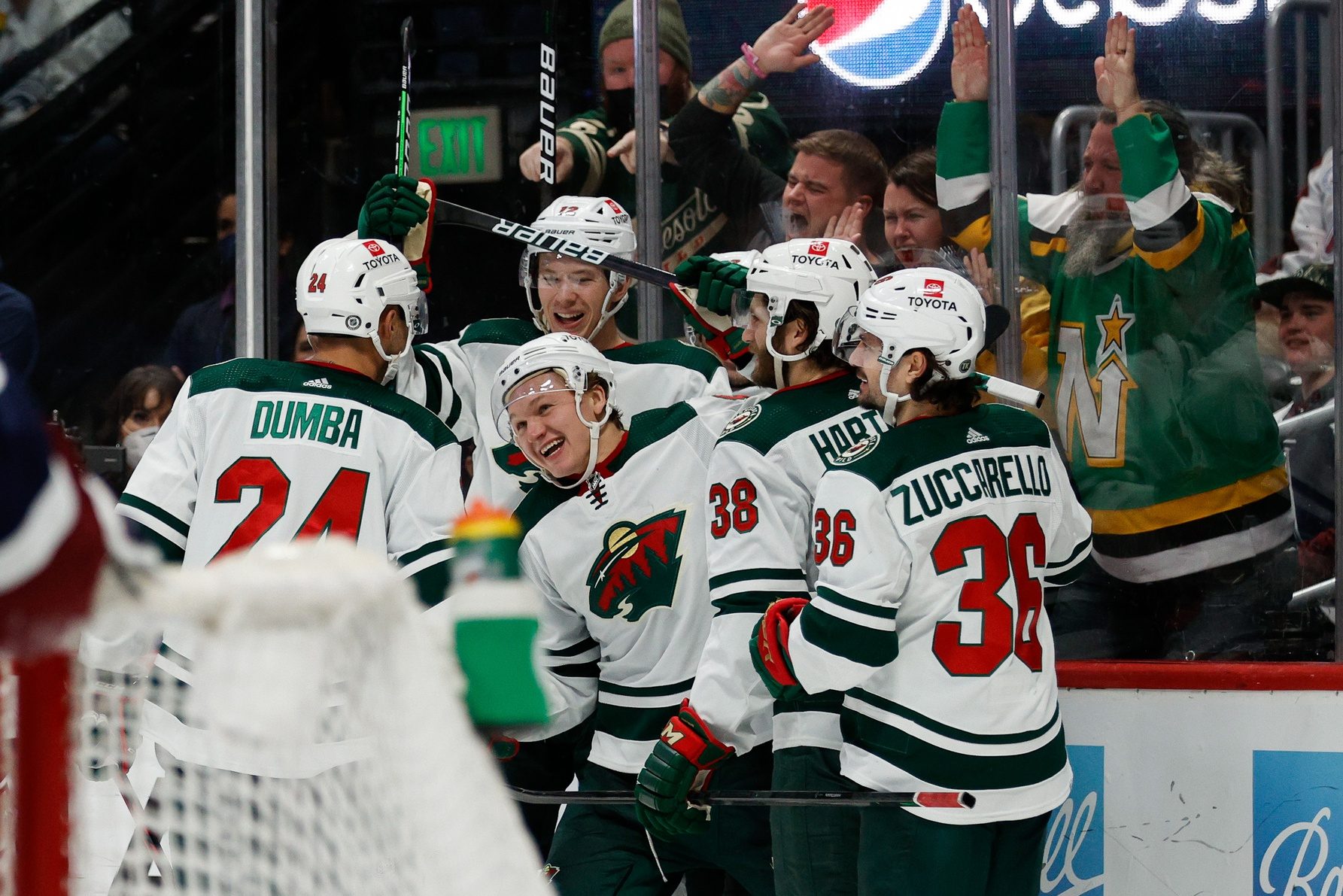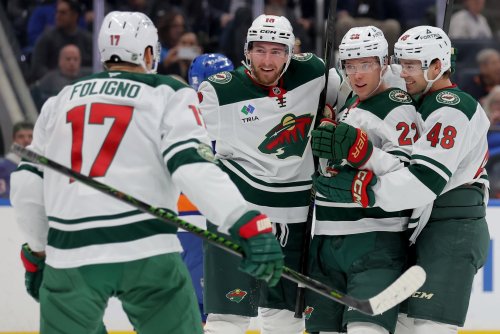
For the 231st time since Bill Guerin bought out Zach Parise and Ryan Suter last summer, we will talk about cap hell. I know you’re sick of it, but hear me out one last time (well, at least until the next time). Let’s talk about how 2025 is the Minnesota Wild's year, even though they will remain competitive in the next three years. When the worst of the dead cap hits comes off the books, they should be ready to truly contend for a Stanley Cup.
However, the dead cap hits won’t be the only reason they will be ready to contend. Heck, they won’t even be the most significant reason.
First, let's touch on the next three years. Yes, the dead cap hits are at their worst starting now, ballooning to nearly $15 million total in the 2023 and 2024 seasons. For that reason, they’ve already claimed Kevin Fiala as their first cap casualty. Still, the Wild are rostering a playoff-quality team. They have a strong NHL roster, coupled with some very valuable assets in the farm system who could make a meaningful impact soon. Even with the struggles, fans should expect multiple playoff berths at a minimum.
We can thank Bill Guerin and Judd Bracket for their work in making the next few years palatable while keeping an eye on the future when those cap hits come off.
However, to expect the Wild to truly contend in the next three years with nearly $15 million in dead cap is simply unreasonable. If the Wild can miraculously make the Western Conference Finals with their cap deficiencies, Guerin should win the GM of the Year award every year for the next decade.
Instead, their time will be the 2025-26 season. That year the Wild can finally spend like a true contender again and not $15 million behind the rest of the league.
The added $13 million in cap space that season won’t be the only thing nudging open their window of contention, though. No, the most significant factor that summer will be a drastic change to the salary cap. Many speculate that the NHL player’s union will have paid back their outstanding debt to the owners by 2025, and the salary cap will jump dramatically – and I mean by a lot.
Probably a good time to bring you up to speed on why the players are in debt and why that debt will keep the cap from rising any significant amount in the coming years.
In 2004, the NHL missed a season due to a lockout between the players union and ownership. The owners wanted a salary cap and for that salary cap to be tied directly to league revenues. The players disagreed, of course. Bye, bye 2004-05 season, hello salary cap.
Gone were the days of the big-market teams throwing money around the top players receiving it. The league installed a hard salary cap, determined by splitting league revenues 50/50 between the players and owners. Owners now keep parts of every player’s paychecks as escrow. They only pay that player back what they were owed in their contract if revenues were high enough at the end of the year. It can be confusing, but escrow is what helps ensure a 50/50 revenue split.
So how does this decision in 2005 affect the current cap in 2022? Simply put, the NHL hasn’t made all that much money in the past few years. The pandemic shortened the 2019-20 season and also wiped out most of the ticket sales the following season. The escrow held from players’ paychecks those years was not nearly enough to cover the losses, and therefore the players are in debt to the owners, to the tune of $1 billion.
Therefore, the cap has remained relatively the same for the past few years and will continue to do so until the debt has been paid back in escrow to the owners. When will this happen? While the league hasn’t said anything publicly yet, many insiders believe this will occur in the summer of 2025. Even prominent player agent Allen Walsh echoed the same on his Agent Provocateur podcast this summer.
When that happens, the salary cap will go back to reflecting a true 50/50 split in revenues, resulting in a massive jump in the cap ceiling. While Walsh was noted as saying it will jump by at least $15 million, others say it could even reach $20 million.
What better timing for the Wild? While every other team might gain another $20 million in cap space, Minnesota will potentially gain $33 million in one summer with the dead cap hits also loosening! Armed with that much space, Guerin would have no problem extending Marco Rossi at a large number, should his play demand it. And those other young prospects who would be in line for a potential extension, such as budding phenom goaltender Jesper Wallstedt? No problem, young man. The Wild would have no problem keeping all their emerging talent and dipping into the off-season free agency pool.
Lastly, Kirill Kaprizov would be eligible for an extension that summer, just one year from free agency. With all that added space, one has to imagine Guerin would back up the Brinks Truck for Kaprizov to end, or at the least, significantly extend his career in Minnesota.
The best thing Minnesota fans can cheer for in the coming years, outside of a few potential, cute playoff appearances, is year after year league revenue records to ensure that 2025 dream scenario. So go ahead and let Kris Lindahl spread his arms next to the TRIA patch. The more the NHL can juice those revenues, the closer they might get to a Stanley Cup.
Think you could write a story like this? Hockey Wilderness wants you to develop your voice, find an audience, and we'll pay you to do it. Just fill out this form.
-
 2
2







Recommended Comments
Join the conversation
You can post now and register later. If you have an account, sign in now to post with your account.
Note: Your post will require moderator approval before it will be visible.